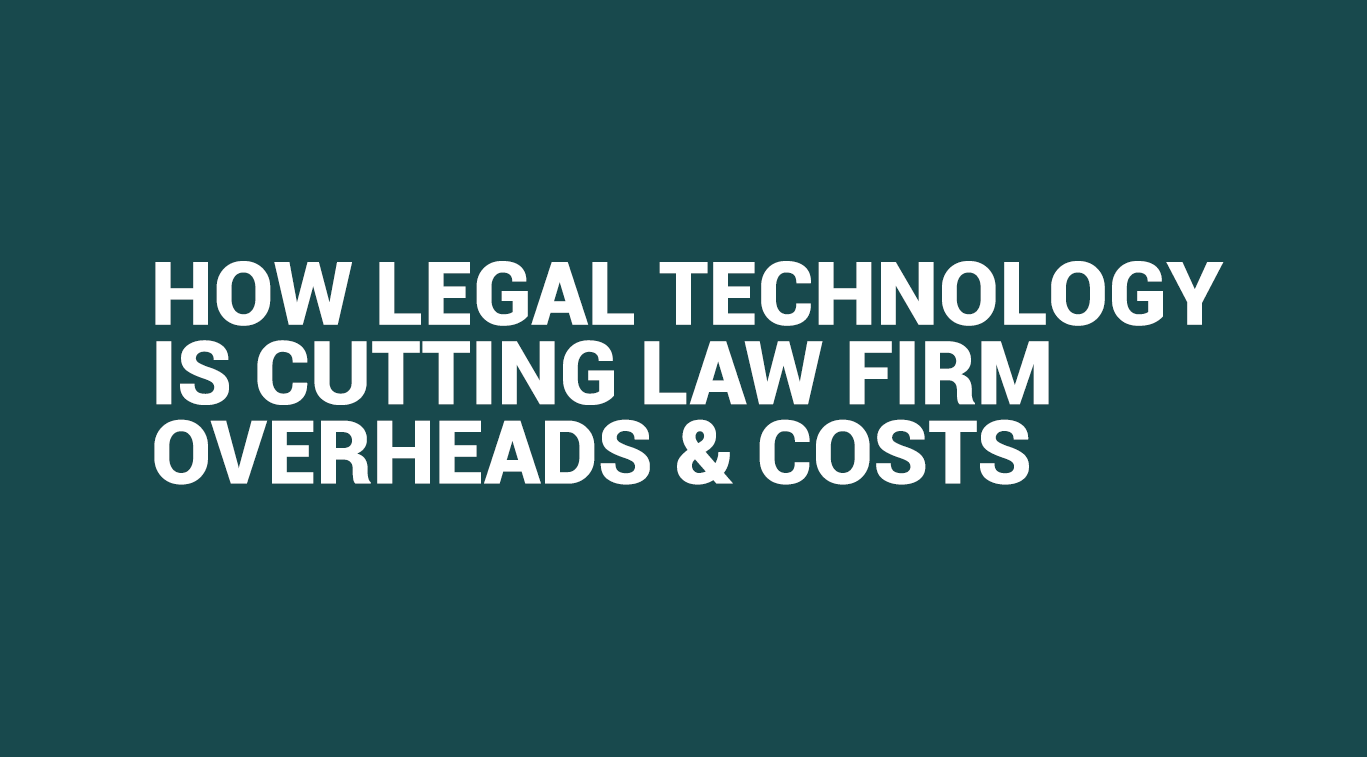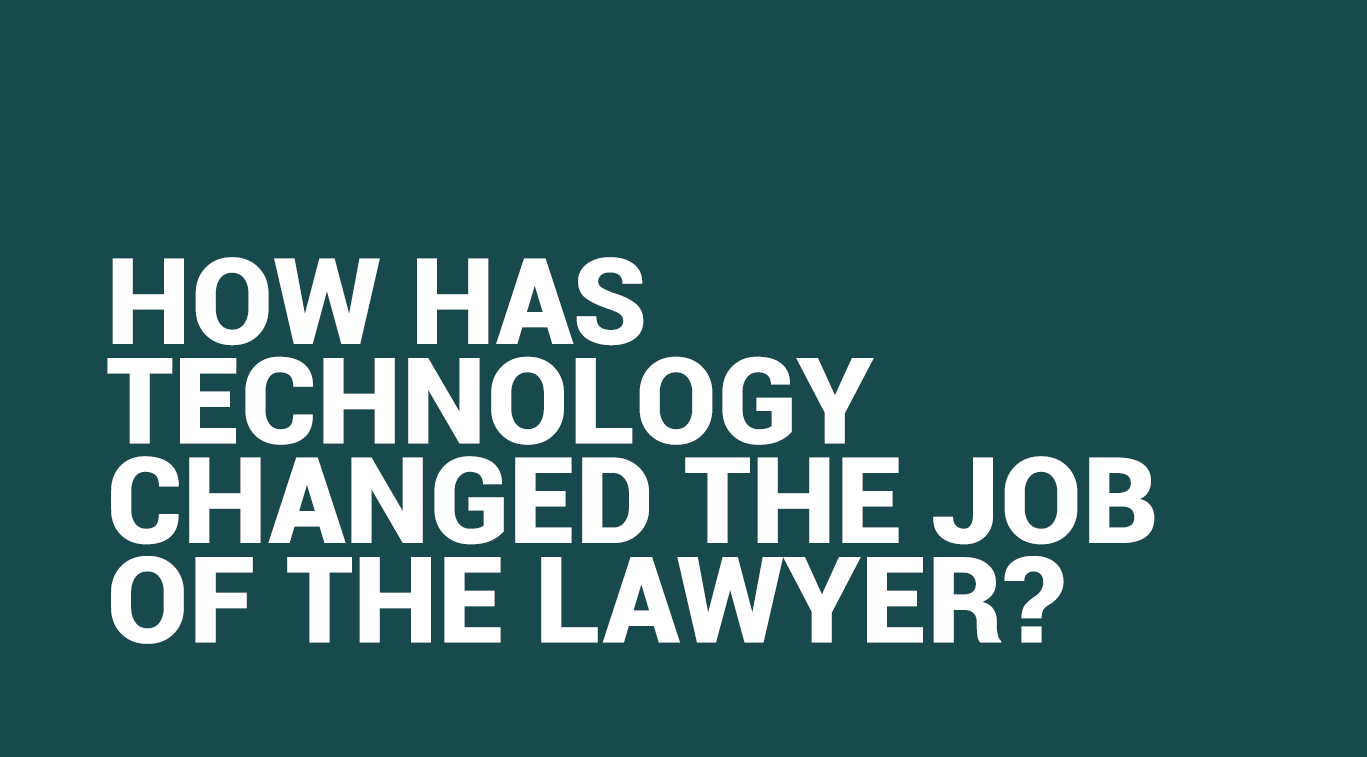How Legal Technology is Cutting Law Firm Overheads & Costs

Written by Maryam Khan
Blogger

The main selling point of legal technology is the increased efficiency and cost savings it brings to the table. Despite this point being emphasized by legal technology providers, many lawyers still believe that incorporating legal technology solutions is a huge investment that is inconvenient and time-consuming. However, this is far from the case as legal technology is reported to have a high return on investment as many law firms such as Allen & Overy and Addleshaw Goddard LLP continue to increase their budget for investment. Despite the significant benefits of legal technology solutions and digitalisation, some law firm’s are sluggish to adapt to new ways of working. In light of this, this article discusses how the use of technology can reduce a law firm’s overall costs and contribute towards generating higher profits.
What are a law firm’s overhead costs?
It is important to first understand what exactly a law firm’s costs are to gain insight into how legal technology can reduce them. An overhead is simply any cost that is not related to a lawyer’s salary [1]. This includes costs such as office rent, internet and phone bills, utilities, printer costs, office equipment, office kitchen and bathroom facilities and meeting room equipment. In addition to this, a law firm’s overhead costs can also include non-lawyer staff salaries such as paralegals, legal assistants, researchers, administrative staff and other office staff. In simpler terms, anything a law firm pays for that does not generate income is considered an overhead cost that needs to be carefully controlled and monitored [2].
Lastly, due to such high overheads and operating costs, most law firm’s charge higher fees yet rarely make any significant profits. Therefore, if overheads are not carefully controlled or reduced, many small law firms end up losing 60% or more of their revenue [3].
Hybrid & Remote Working
Law firm’s have significantly reduced their overhead costs by not using their office space or simply reducing their office size due to most of their staff working from home following the pandemic. As a result, law firm’s not only save on rent but also save on reduced utility bills. Moreover, as law firms become increasingly digitized, they no longer have a need for large storage spaces for their paperwork. Legal technology software including document management systems, legal billing software and case management systems have all made this possible. Moreover, the use of video conferencing software has also resulted in physical boardrooms not being used as much. The rise of virtual law firms also attest to this fact as they have limited overhead costs as they operate completely online [4]. The importance of legal technology here is that without such software, successfully working from home would have been a huge challenge for law firms.
Administrative Costs
Administrative work is essential for law firms to function successfully, yet it can be challenging, complicated and inconvenient. Thomson Reuter’s report highlights that law firms tend to spend 40% of their time on administrative and non-billable tasks [5]. As a result, lawyers find that their firm’s administrative tasks are time-consuming, monotonous and take their attention from other complicated tasks that require their legal expertise and cannot be automated. To solve this problem, law firms often hire separate administrative staff to deal with such tasks. However, this is again an added cost that can be significantly reduced through document and workflow automation, automated case management and the use of smart contracts as law firm’s no longer have to hire additional non-lawyer staff [6].
Legal Billing & Spend Management Software
Legal spend management software is used to evaluate, track, analyze, and report on the internal and external legal costs of a law firm or in-house legal department [7]. This software is specifically used to make legal billing more efficient alongside identifying cost-cutting opportunities and developing cost-effective business strategies that reduce long-term costs. Additionally, online billing software also automatically generates invoices from accounting data which frees up time for lawyers to focus on more profitable tasks as opposed to admin work [8].
These data-driven software’s pinpoint exactly which areas of a firm’s practice is generating the most and least profit. These built-in legal data analytics features generate valuable insights that enable law firm management to understand where investment needs to be directed to increase revenue or where resources need to be removed once a low return on investment is identified [9]. Having this knowledge and using it to make informed decisions allows law firms to predict their future costs, identify any budgeting issues in advance and work towards solving them at the right time. Moreover, reporting and analytics tools built in such software provides law firm’s access to real-time data through which they can understand the average spend of their competitors and make decisions accordingly [10].
Controlling vs. Cutting Costs
Increasing profits while keeping costs at a minimum is a huge priority for every law firm, regardless of its size or practice area. However, achieving this is not an easy task. To do so, law firm’s must maintain a certain level of overhead costs to continue operating efficiently. This not only involves cutting costs, but also controlling them by adopting a ‘more for less’ approach. This approach allows law firm’s to provide more value to their clients at a lower cost through the use of legal technology solutions [11].
Final Words
Adapting to new ways of working and utilizing legal technology considerably reduces a law firm’s overhead costs allowing greater profit to be retained. Legal technology software solutions are incredibly varied and customisable, meaning there is a solution any legal practice can benefit from regardless of its size, structure or practice area. Automating tasks through legal technology creates more capacity for lawyers as they are no longer stuck completing menial, administrative tasks that do not contribute towards the firm’s billable hours. Law firm’s need to be prepared to leverage legal technology innovation to cut their costs, increase their capacity and ultimately grow their business.
References
[1] Rikke Diget Fuglsang, ‘Law Firm Overhead; Understanding, Diagnosing, & Fixing Profit Killers’ (2022) at https://www.askcody.com/blog/law-firm-overhead
[2] Ibid
[3] Ibid
[4] ‘Virtual Law Firm’s in 2022: Creating a New Way For Lawyers To Do What They Do Best’, Venables Legal Resources at virtual-law-firms-in-2022-creating-a-new-way-for-lawyers-to-do-what-they-do-best
[5] Sara Sawyer, ‘ What would you do with your 40%?’ (2017) at
https://legal.thomsonreuters.com/en/insights/articles/what-would-you-do-with-40-percent-more-time
[6] Lauren Lee, ‘How legal technology gets you out of admin work’ (2020) at https://www.simplelegal.com/blog/how-legal-technology-gets-you-out-of-admin-work
[7] ‘What is legal spend management?’ (2022) at https://legal.thomsonreuters.com/en/insights/articles/what-is-legal-spend-management
[8] Ibid (1)
[9] Ibid (7)
[10] Ibid
[11] Nicholas d’Adhemar, ‘Legal Tech Must Shift Focus from Cutting Legal Costs to Controlling Them’ (2022) at https://www.law.com/legaltechnews/2022/05/17/legal-tech-must-shift-focus-from-cutting-legal-costs-to-controlling-them/








